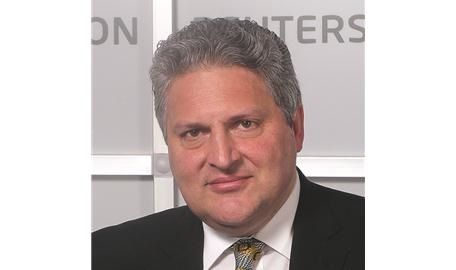DO GOLDMAN SACHS’s most recent executive shifts give away valuable clues as to how investment banks’ corporate and institutional clients will need to be serviced as this treacherous market gives rise to all sorts of doom and gloom scenarios and outlooks, and market-structure shifts in FICC call for new ideas?
Good question. The firm has certainly been busy. Former co-head of the financing group in IBD and all-round nice guy Jim Esposito has switched to the securities division to run strategy; a nice parallel with his predecessor Stephen Scherr, who became chief strategy officer for the firm back in 2014. Esposito’s move leaves his former partner Marc Nachmann as sole head of the financing group.
As is the way with these things, Esposito’s move gave rise to a veritable wave of related moves. High-yield/leveraged finance man Denis Coleman got the nod to head up the financing group in EMEA (which Esposito was basically taking care of), while current head of EMEA high-yield and leveraged loan capital markets Michael Marsh gets a leg up as head of EMEA leveraged finance.
In the US, high-yield veteran and co-head of Americas leveraged finance Craig Packer, who joined Goldman in 2006 from Credit Suisse, is leaving the firm. In an interesting twist, Goldman merged leveraged finance with structured finance to form an Americas credit finance group, to be run by Christina Minnis (previously head of Americas leveraged finance) and Vivek Bantwal (head of Americas structured finance), whose focus will be delivering customised solutions to clients that are “increasingly focused on optimising capital structure”.
We in the media love conspiracy theories but before I have time to develop one around the timing of Packer’s departure and Esposito’s move, I’m told the two are unrelated and purely coincidental. Oh well … Esposito is currently based in London and will remain there.
Someone did ask me whether Esposito’s move was a sideways one rather than an upwards one. I wouldn’t have thought so. His entrée into the rarefied surroundings of the firm’s management committee in December (along with Nachmann and M&A superstar Greg Lemkau) cemented his importance as a potential future leader of the firm as Goldman undergoes a generational shift in its inner circle. Spending senior management time in the securities division will broaden his skill-set, presumably sharpen his network of internal relationships and stand him in good stead to get further up the ladder.
When Goldman updates or shifts its divisional structures, it’s typically a sign the industry will morph along with it in short order
Mind you, to my point at the top, the memo announcing Esposito’s switch laid out some formidable challenges (particularly profound in FICC): dealing with the effects of an industry undergoing extraordinary change driven by technology and regulation; forces that are “reshaping market structure and pressuring many of our competitors to retrench or exit from businesses and regions”.
The task ahead of Esposito is to execute on what the firm sees as significant opportunity to work more deeply and expansively with an even larger set of clients. “Our mission is to adjust our practices and aspirations in a way that takes into account structural developments and our strong market position.” No pressure, Jim.
AS AN INVESTMENT banking bellwether, when Goldman updates or shifts its divisional structures and/or seeks to upgrade its capabilities, it’s typically a sign that the industry will morph along with it in short order as investment banks broadly try to figure out a way of optimising their offerings as the market turns nasty and clients get nailed to the floor.
Goldman’s loan and debt underwriting franchise has always been weighted towards the hairier end of the spectrum, working with more storied corporates whose needs tend to demand more tailored solutions, where fees are chunkier, returns are higher and the fit with the merchant banking/principal side typically worked better.
The firm ranked second in global high-yield debt underwriting in 2015, was eighth in US leveraged lending; and a chunk of its investment-grade mandates were in the oil and gas and metals and mining sectors. In 2015 alone, my back-of-the-envelope calculations suggest Goldman was involved as bookrunner (one of several) on deals for around 260 companies worth about US$350bn across high-yield bonds and leveraged lending (albeit with a fair degree of overlap between borrowers with inter-related bond, loan and acquisition finance facilities).
Add to that 2015 total the quantum of commitments made in prior years; overlay the current market gloom and the poor outlook for companies caught out by it in certain industry sectors and what you end up with is a pretty large universe of clients with formidable amounts of debt potentially needing formidable solutions to their potentially formidable problems.
The executive make-up, structure and orientation of Goldman’s financing group clearly suggests the firm is girding itself for battle and preparing to deal with fallout. And it’s putting the people with the right experience in the front line.
I watched a talking head on business TV the other day break down today’s US debt market into investment-grade corporates; corporates that were formerly investment-grade; high-yield corporates … and junk.
I’ve always thought investment banks are at their most impressive when deep problem-solving and dealing with a wide range of idiosyncratic situations are called for. If the risk of failure is too dark to contemplate for those clients who put themselves in your hands ahead of potential oblivion, it just stirs the innovative spirit, stimulates the creative juices, spawns lateral thinking and demands new ways of achieving results.
You know what they say: one man’s junk …
